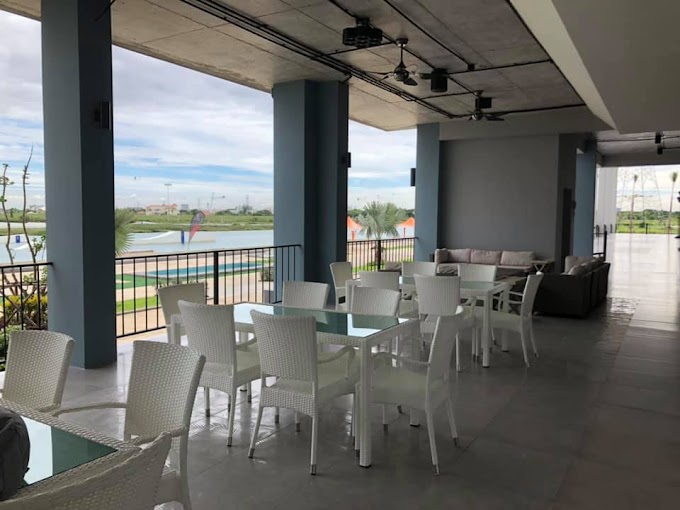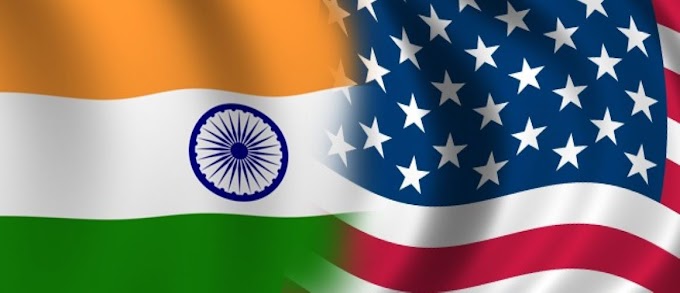SRI LANKAN CRISIS
State of emergency has been announced in Sri Lanka, Social media websites have been banned. And curfew has been declared across the Island. Before this, thousands of people were out on the streets protesting. There is a scarcity of fuel in the country and Sri Lanka is going through a major economic crisis.
Let’s try to understand what is the reason behind this?
First, let’s understand the situation in Sri Lanka right now. In February, Sri Lankas foreign currency reserves were at mere $2.3 billion. Compared to January 2020, it had fallen below 70%. If a Country has a low currency reserve, it is difficult it to import goods from other countries. With the present level of foreign currency reserve in Sri Lanka, it can import goods to meet one month’s needs only. Apart from this, there is a debt payment of $ 4 million due from Sri Lanka.
Sri Lanka relies on imported goods even for basic product like sugar, cereals, pharmaceuticals. Sri Lanka has to import these from other countries. Because of the low currency reserve, it is becoming increasingly difficult to import these leading to rapid inflation in the prices of these basic commodities in the country.
There is a high inflation in Sri Lanka. In the last two-month Sri Lanka witnessed 25% inflation. People are facing difficulties to purchase even the basic things like Rice, sugar, milk. Not even daily basic thing but also people are getting electricity for only 4 hours a day. There is so many power cuts, the Power Minister of Sri Lanka has directed the officials to turn off the street lights to save the power consumption. The government ordered their electricity board, to get diesel from the Sri Lankan branch of Indian Oil Corporation, the Lankan Indian Oil Corporation. LIOC has given 6,000 MT of diesel to Sri Lanka, so that there is some relief in the situation.
Cooking gas supplied only once per week. And the price of gas cylinders, went up to LKR 3,000 to LKR 4200. It is around 1200 in Indian currency. There is a long queue outside the stations.
It has affected the newspaper, printing and many industries . Newspapers have to minimize their prints because of the shortage in printing materials. School exams have been postponed due to shortage of papers. Due to this food and economic crisis, people have started to fleeing the country.
India is supporting Sri Lanka in the other ways as on 17th march Sri Lankan Finance Minister signed a credit line of $1 billion with New Delhi. Earlier in the year, a $500 million credit line was signed for fuel purchases. India did a Currency swap of $400 million. And now Sri Lanka is requesting another credit line of $1 billion from India. So that they can purchase basic items for their country and the situation can be controlled a bit.
But India is not Only country, from whom Sri Lanka has asked for help. They approach chine for help too. Sri Lanka is deep in China’s debt. Sri Lanka had to make several debt repayments to China, So Sri Lanka has requested China to restructure the debts. Along with it, they are discussing a $2.5 billion credit line from China. There have been discussions with IMF and the World Bank too, Sri Lanka’s President will go to Washington DC next month, so that they could work out a rescue plan to save the country.
The biggest question here is that why did it happen?
There is no single reason for it, there are multiple reasons for this. In 2018, Sri Lanka record one of the world’s top most tourism destinations. Truly said, 2018 was a record-breaking year for Sri Lanka, 2.3 million foreign tourists visited Sri Lanka. About 12% to 13% of Sri Lanka’s economy relied on tourism.
Easter Day Case
Then In April 2019, there were multiple bombing in the country, known as Easter Day Bombings. Three churches and three hotels were targeted across several cities, 269 people were killed in this bombing, 45 of them were foreign national. So, we can imagine why this one-day wrecked tourism, 8 suicide bombers were responsible for the bombings. Sri Lankan citizens, associated with a local Islamic terrorist group. Due to this, the following month, there was a large anti-Muslim violence in Sri Lanka. Homes, shops, cars of Muslim were attacked, and vandalized.
To control this more than 100 troops were deployed in Negombo town. Curfews are imposed, the government blocked Facebook and WhatsApp to stop the rumors. All of these had a terrible effect on tourism. But it was only the beginning.
Covid-19 Pandemic
After this, in March 2020, the Covid-19 pandemic struck shutting down tourism all around the world. As I said 12% to 13% of the Country’s economy relied on tourism, the entire sector collapsed. But even a collapse in tourism shouldn’t be able to cause this much damage, there are more reasons.
Bold decision of Government
The Government made mistakes too. The Sri Lankan President, Gotabaya Rajpaksa, won the election in 2019 and came into power. In this Presidential campaign, he had promised to revive the economic growth in the country. Another promise was to cut down the Value Added Tax, VAT, to half. VAT used to be charged at 15% before this. The simple reason for the tax cuts was that if people paid less tax, they would spend more. With the increase in consumptions, there would be economic Growth There is nothing wrong in this logic. This is worked out successfully in many instances.
This tax cut come in effect on 1st December 2019. 3 months later Covid-19 pandemic hit. The logic was that people would consume more with a reduction tax, but with the lockdown, and people unable to go out to consume things, there was no increase in consumption. There was no increase in consumption and none in economic growth either. And the Government had to incur a huge revenue loss, Sri Lanka’s public debt kept increasing. In 2019, the debt was 94% of GDP. By 2021, it had gone up to 119% of GDP.
Their President come up with a “Masterstroke” too. In the 2019 elections, he had promised that he would convert the country’s agriculture into Organic. In this campaign, he spoke about how, over 10years, he would shift agriculture to 100% organic. And then he came up with sudden decision.
He wanted the country to overnight become a country that practices 100% organic agriculture. There was another reason to make this decision to cut down imports. Synthetic fertilizers and pesticides were highly took to the country. Such decisions are lauded as bold by the fans of some politicians.
A sudden Major disruption, must be good. But these sudden, bold decisions, are often without much thought. True change in the country happens slowly and with planning. So that instant decision the government had to spend $450 million to import rice. There was a large tea production in Sri Lanka, and the tea used to be exported to other countries. A major source of foreign currency for the government was the tea export. The ban on Pesticides and fertilizers destroyed the tea crop too.
Food Mafia
Another reason behind Sri Lankan economic crisis is the food mafia. The government claims that the food mafia is hoarding the food, there is a black market for even the basic items like Rice, sugar and pulses.
Foreign Debt
And then comes the final reason, foreign debt. This is not a new problem. This has always been a problem for Sri Lanka historically. In 2017, Sri Lanka’s total debt was $64 billion. 95% of the government revenue, went to debt repayment. In 2020, the debt was at $51 billion, and Sri Lanka imposed an import ban on foreign currency to repay this debt.
Chinese Strategy
China also blamed for this. It’s said that China is using debt-trap policy as like other countries in Sri Lanka. China lends billions of dollars to countries so that they could fund, big infrastructure projects for highways, ports, airports, to build power plants and when the other country can’t profit out of it, when they can’t repay the debt, China then confiscates the project and Chinese take over it.
A major example of this is the Hambantota International Port, Sri Lanka. It was built in November, 2010, at the cost of $1.3 billion. With a loan from China. But the port had to suffer huge losses and Sri Lanka could not repay the debt. That’s why the new government decided that 80% of the stake of the port would be privatized or to sold off to private companies. After the bidding, a Chinese company bought the stakes in the Port.
After the negotiations, in July 2017, this agreement was finally signed, 70% of the stake was sold to China Merchant Port. Additionally, this Port was leased out to this company on a 99 Year-lease. In Exchange, Sri Lanka received $1.2 billion in foreign currency. Many critics and oppositions had opposed this and asking the government to stop selling the country. Due to this reason the value of Sri Lankan rupee is deteriorating rapidly.
At the beginning of March, $1 was approximately about LKR 200. Now, the currency conversion rate has made to $1 about LKR 300. Because the value of their currency is falling, everything that they import, from foreign countries are becoming more and more expensive. This, in turn, causes more inflation.
So that are the most issue that Sri Lanka fell down to revive economy, inflation, shortage of basic things in country and foreign debt to make it Emergency state.






















